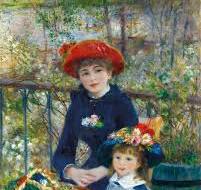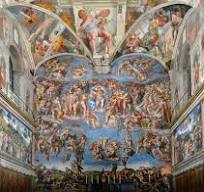The Captivating Self-Portraits of Vincent van Gogh
Vincent van Gogh, a renowned Dutch post-impressionist painter, is celebrated for his emotionally charged and expressive artworks. Among his notable works are his captivating self-portraits, which offer a glimpse into the artist’s inner world and turbulent psyche.
Van Gogh’s self-portraits are not mere representations of his physical appearance but rather profound reflections of his emotional state and artistic vision. Through bold brushstrokes and vibrant colors, he conveyed a sense of raw emotion and psychological depth in each self-portrait.
One of the most famous self-portraits by van Gogh is the painting created in 1889 while he was staying at an asylum in Saint-Rémy-de-Provence. In this hauntingly beautiful artwork, van Gogh depicted himself with a bandaged ear, a poignant reminder of his struggles with mental health and inner turmoil.
Van Gogh’s self-portraits are characterized by intense introspection and a deep sense of vulnerability. His use of light and shadow, along with expressive brushwork, creates a sense of immediacy and intimacy that draws viewers into the artist’s world.
Despite facing numerous challenges in his life, van Gogh’s self-portraits reflect his unwavering passion for art and his relentless pursuit of creative expression. Each self-portrait serves as a testament to van Gogh’s artistic genius and enduring legacy as one of the most influential artists in history.
Through his self-portraits, Vincent van Gogh invites us to contemplate the complexities of human existence and the power of art to transcend personal struggles. His iconic self-portraits continue to inspire audiences around the world, leaving an indelible mark on the history of art.
Exploring Vincent van Gogh’s Self-Portraits: Significance, Techniques, and Interpretations
- 1. What is the significance of Vincent van Gogh’s self-portraits?
- 2. How many self-portraits did Vincent van Gogh create?
- 3. What inspired van Gogh to paint self-portraits?
- 4. Are there any hidden meanings in van Gogh’s self-portraits?
- 5. How did van Gogh’s mental health influence his self-portrait paintings?
- 6. Where can I view van Gogh’s famous self-portraits?
- 7. Did van Gogh use specific techniques in his self-portrait paintings?
- 8. What is the story behind the bandaged ear in one of van Gogh’s self-portraits?
- 9. How do art critics interpret and analyze van Gogh’s self-portrait artworks?
1. What is the significance of Vincent van Gogh’s self-portraits?
Vincent van Gogh’s self-portraits hold significant artistic and emotional value in the art world. They offer a profound insight into the artist’s inner struggles, emotional turmoil, and evolving artistic style. Through his self-portraits, van Gogh not only captured his physical likeness but also expressed his complex emotions and psychological state. The intensity and rawness of his self-portraits reveal his deep introspection and self-exploration, making them powerful reflections of his inner world. Additionally, van Gogh’s self-portraits showcase his mastery of color, brushwork, and composition, highlighting his innovative approach to portraiture. Overall, the significance of Vincent van Gogh’s self-portraits lies in their ability to convey the artist’s profound humanity and artistic genius to viewers across generations.
2. How many self-portraits did Vincent van Gogh create?
Vincent van Gogh, the prolific Dutch post-impressionist painter, created an impressive number of self-portraits throughout his artistic career. It is estimated that van Gogh painted around 35 self-portraits in total, capturing various facets of his own persona and reflecting his evolving artistic style and emotional state. These self-portraits serve as a unique insight into van Gogh’s self-exploration and introspection, showcasing his mastery of capturing the complexities of human emotion through art. Each self-portrait by van Gogh is a testament to his dedication to the craft and his relentless pursuit of creative expression.
3. What inspired van Gogh to paint self-portraits?
Vincent van Gogh’s self-portraits were inspired by a deep sense of introspection and self-exploration. Throughout his life, van Gogh used art as a means of expressing his innermost thoughts and emotions. His self-portraits allowed him to delve into his own psyche, capturing not only his physical likeness but also his inner struggles and emotional turmoil. By painting himself repeatedly, van Gogh sought to understand himself better and convey the complexities of the human experience through art. Each self-portrait became a window into his soul, reflecting his evolving artistic vision and personal journey.
4. Are there any hidden meanings in van Gogh’s self-portraits?
In exploring the question of whether there are hidden meanings in Vincent van Gogh’s self-portraits, one delves into the intricate layers of symbolism and personal expression that characterize his artworks. Van Gogh’s self-portraits are often seen as windows into his inner world, where each brushstroke and color choice holds significance beyond mere representation. Scholars and art enthusiasts alike have speculated on the possible hidden meanings behind van Gogh’s self-portraits, suggesting that elements such as his use of color, composition, and facial expressions may convey deeper emotions, struggles, or reflections on his own identity and existence. The enigmatic nature of van Gogh’s self-portraits continues to spark curiosity and interpretation, inviting viewers to unravel the mysteries embedded within these iconic works of art.
5. How did van Gogh’s mental health influence his self-portrait paintings?
Vincent van Gogh’s mental health had a profound impact on his self-portrait paintings, serving as a powerful catalyst for his artistic expression. Throughout his life, van Gogh struggled with mental health issues, including periods of intense emotional turmoil and instability. These struggles found their way into his self-portraits, where he often depicted himself with raw emotion and psychological depth. The intensity and vulnerability in van Gogh’s self-portraits reflect the inner turmoil and anguish he experienced, offering a poignant insight into the artist’s state of mind. Through his art, van Gogh channeled his emotions and inner struggles onto the canvas, creating works that not only captured his physical likeness but also served as a window into his troubled psyche.
6. Where can I view van Gogh’s famous self-portraits?
Vincent van Gogh’s famous self-portraits can be viewed in various prestigious art institutions and museums around the world. Some of the most renowned collections featuring van Gogh’s self-portraits include the Van Gogh Museum in Amsterdam, the Musée d’Orsay in Paris, and the National Gallery of Art in Washington, D.C. These institutions offer art enthusiasts and visitors alike the opportunity to experience firsthand the beauty and emotional depth of van Gogh’s iconic self-portraits. Additionally, special exhibitions and traveling showcases may also feature van Gogh’s self-portraits, providing art lovers with unique opportunities to engage with these masterpieces in different settings and contexts.
7. Did van Gogh use specific techniques in his self-portrait paintings?
In his self-portrait paintings, Vincent van Gogh employed specific techniques that were characteristic of his unique artistic style. Van Gogh was known for his bold and expressive brushwork, which added a sense of dynamism and emotion to his self-portraits. He often used vibrant colors and contrasting tones to create depth and intensity in his works. Additionally, van Gogh’s manipulation of light and shadow played a crucial role in highlighting the contours of his face and conveying a sense of mood and atmosphere. Through these distinctive techniques, van Gogh infused his self-portraits with a profound sense of introspection and psychological depth, making them powerful reflections of his inner world.
8. What is the story behind the bandaged ear in one of van Gogh’s self-portraits?
In one of Vincent van Gogh’s self-portraits, the presence of a bandaged ear holds a significant and poignant story. The painting, created in 1889 during his stay at an asylum in Saint-Rémy-de-Provence, captures a moment of deep personal turmoil for the artist. Van Gogh famously severed a part of his own ear during a period of intense emotional distress and mental instability. The bandaged ear in the self-portrait serves as a powerful symbol of van Gogh’s inner struggles, highlighting the complexities of his mental health and the profound impact it had on his life and art. Through this haunting depiction, van Gogh invites viewers to delve into the depths of his psyche and contemplate the fragility of human existence.
9. How do art critics interpret and analyze van Gogh’s self-portrait artworks?
Art critics interpret and analyze Vincent van Gogh’s self-portrait artworks with a keen eye for detail and a deep understanding of the artist’s life and work. Through careful examination of van Gogh’s brushwork, use of color, composition, and emotional expression, art critics delve into the psychological complexities and artistic innovations present in his self-portraits. They often highlight the symbolic elements and personal symbolism embedded in each artwork, shedding light on van Gogh’s inner struggles, creative process, and unique perspective on self-representation. By contextualizing his self-portraits within the broader scope of his oeuvre and historical significance, art critics offer valuable insights into the profound impact of van Gogh’s self-portrait artworks on the art world and beyond.



